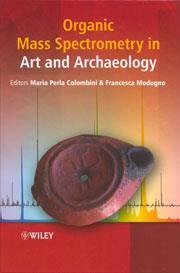Organic mass spectrometry in art and archaeology
Organic mass spectrometry in art and archaeology
Maria Perla Colombini and Francesca Modugno (eds)
Chichester, UK: Wiley-Blackwell 2009 | 508pp | ?120.00 (HB)
ISBN 9780470517031
Reviewed by James McCullagh

This book provides a fascinating insight into the role mass spectrometry plays in the scientific study of artistic and archaeological objects. It explains how molecular level components, such as fats and oils in paints, seals and ancient documents, can be identified and used to confirm the provenance of an object. It describes how breakdown products act as chemical markers for degradation, as well as the success of preservation techniques and how residues in archaeology, whether they are from human remains or lipids extracted from pottery, can be used to reconstruct what our ancestors ate in prehistoric times.
The material covered is multidisciplinary and, as such, contextualises information at the interface between chemistry, mass spectrometry, materials science and conservation science. This defines the potential readership, although the approach is primarily technical and methodological.
Particular attention is paid to direct mass spectrometric techniques and those coupled with gas chromatography to identify fats and oils, varnishes, resins and binders in paintings; only a small section covers the role of liquid chromatography with mass spectrometry. The attention given to archaeological applications is also brief, although the use of compound specific isotope analysis in palaeodietary reconstruction is particularly well described. The case studies are methodologically informative throughout and well illustrated.
With the increasing application of mass spectrometry in art and archaeological research, this is a timely volume bringing together important information. Although not definitive it makes an important contribution and deserves to be well received.












No comments yet